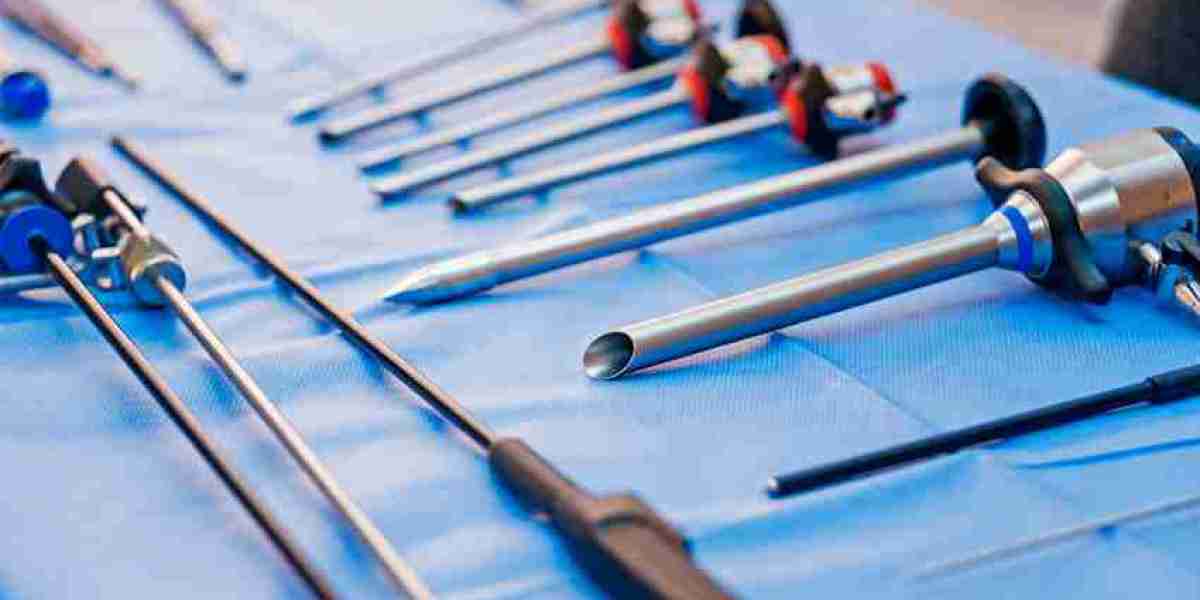Introduction
The laparoscopic devices market has been growing steadily due to increasing demand for minimally invasive surgeries, which offer shorter recovery times, reduced complications, and better patient outcomes. However, several challenges continue to hinder the widespread adoption and growth of this market. These barriers, particularly high costs and a shortage of skilled professionals, are limiting the accessibility and effectiveness of laparoscopic procedures in both developed and developing regions. This article identifies these key challenges and explores how they affect market dynamics.
High Costs of Laparoscopic Devices
One of the most significant barriers to the growth of the laparoscopic devices market is the high cost of advanced laparoscopic technologies. High-end laparoscopic systems, especially those integrated with robotic-assisted surgery tools, are expensive both in terms of initial investment and maintenance. For example, robotic systems designed for minimally invasive surgeries can cost millions of dollars, which may not be feasible for smaller healthcare facilities or those in developing regions.
The high costs of laparoscopic instruments, including energy devices, trocars, and specialized cameras, further contribute to the financial burden. Many of these tools require frequent replacement or are designed for single use, adding to the ongoing operational costs. For hospitals and clinics with tight budgets, these expenses can be a major deterrent, making it challenging to justify investment in laparoscopic technology despite its clinical benefits.
Additionally, the cost of training healthcare professionals to operate advanced laparoscopic devices adds to the overall financial burden. Hospitals may struggle to allocate funds for both the purchase of expensive equipment and the necessary training programs for surgical teams, further limiting the adoption of these technologies.
Limited Skilled Professionals
Another significant barrier to the growth of the laparoscopic devices market is the shortage of skilled professionals capable of performing complex laparoscopic procedures. While the demand for minimally invasive surgeries continues to rise, the number of trained surgeons and technicians who can proficiently operate laparoscopic devices is not growing at the same pace.
Laparoscopic surgeries require a high level of skill, as they involve precise handling of delicate instruments in a confined space with limited visibility. As such, these procedures cannot be easily performed by just any surgeon; specialized training is essential. However, the availability of comprehensive training programs and skilled instructors remains a challenge, especially in regions with limited healthcare infrastructure.
In addition to surgeons, the demand for specialized laparoscopic nurses, surgical assistants, and technicians is also increasing. These professionals play a vital role in the operation of laparoscopic devices, yet there is a lack of training opportunities for them, particularly in rural or underserved areas. As a result, many healthcare facilities struggle to ensure that their teams are adequately trained to handle the complexity of laparoscopic surgery, which can affect the efficiency and success of these procedures.
Access to Healthcare in Developing Regions
The high cost of laparoscopic devices and the shortage of skilled professionals are particularly pronounced in developing regions, where access to healthcare resources is limited. Although laparoscopic surgery offers significant advantages over traditional open surgery, such as smaller incisions and faster recovery times, many hospitals in these regions lack the financial resources to invest in such advanced technologies.
In addition, the shortage of trained professionals in many developing countries further exacerbates the issue. While laparoscopic surgery is becoming more popular worldwide, many regions still rely on traditional, open surgical methods due to the lack of access to laparoscopic equipment and trained personnel. This creates a gap in the equitable delivery of healthcare, limiting the potential for laparoscopic devices to improve surgical outcomes in these regions.
Regulatory Challenges
Regulatory barriers also present challenges in the laparoscopic devices market. In many countries, especially in emerging markets, the approval process for medical devices can be time-consuming and costly. Stringent regulations, varying from region to region, make it difficult for manufacturers to quickly bring new laparoscopic technologies to market. These delays can slow down the adoption of the latest devices, hindering the market's growth potential.
In addition, the lack of standardized guidelines for the use of laparoscopic devices in certain regions can create confusion and inconsistencies in surgical practice, further complicating the situation. As manufacturers work to meet regulatory requirements, the cost of compliance can drive up the price of devices, making them even less affordable for healthcare providers.
Market Opportunities Amid Challenges
Despite these challenges, there are several opportunities for growth in the laparoscopic devices market. Manufacturers are increasingly focusing on developing cost-effective solutions for low-resource settings, including more affordable instruments and disposables. The development of versatile laparoscopic tools that can be used across a range of surgical specialties is also helping to make laparoscopic surgery more accessible.
Additionally, there is a growing trend toward remote learning and virtual training programs, which can help bridge the skill gap in laparoscopic surgery. Online education and simulation-based training programs are becoming more popular, making it easier for healthcare professionals in underserved regions to receive specialized education without having to travel to expensive training centers.
Moreover, collaborations between governments, non-profit organizations, and private sector players are increasingly aimed at improving access to advanced surgical technologies in low- and middle-income countries. Such partnerships can help improve the availability of laparoscopic devices and skilled professionals in underserved areas.




